
Kelham Island Industrial Museum. Kelham Island in the Don River in Sheffield. The island already had water-powered metal grinding workshops in 1637. In 1829, the Kelham Island Iron Works produced a variety of metal household goods and tools. Other companies followed. In 1890, a power station was built on the island for Sheffield’s new electric tram system. The Kelham Island Industrial Museum now uses these the buildings for its exhibits and workshops.
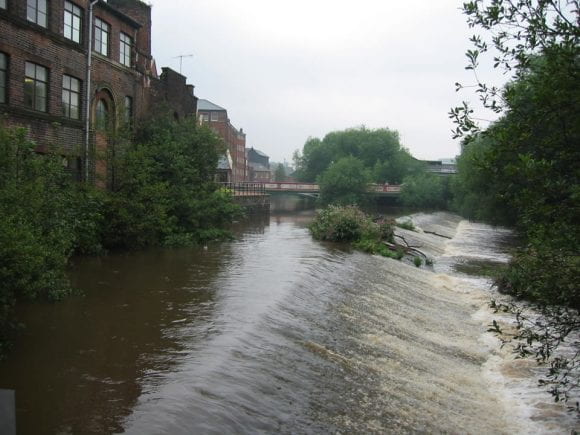
The dam was used to power the workshops on the island before steam power and electricity.
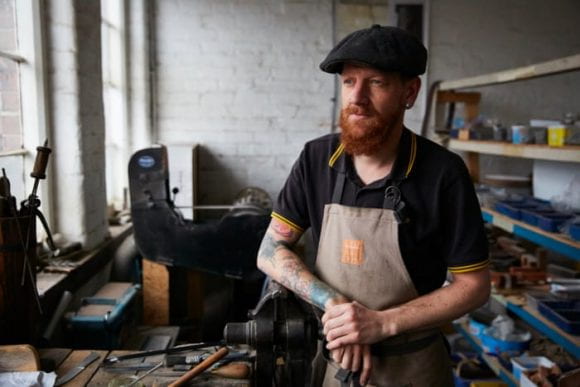
Sheffield became famous for the production of quality cutlery, which was originally produced by independent craftsmen, who were called “little mesters,” in small home workshops or rented space.
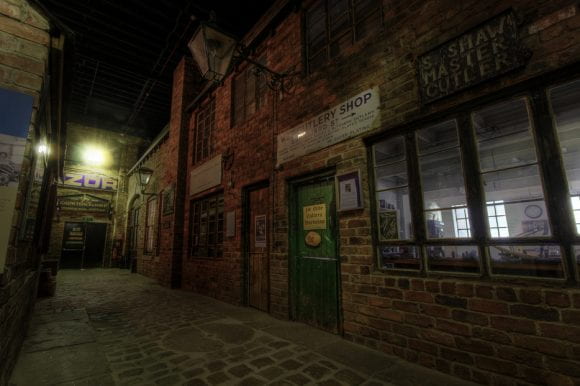
Litle Mester shops at the Kelham Island industrial Museum
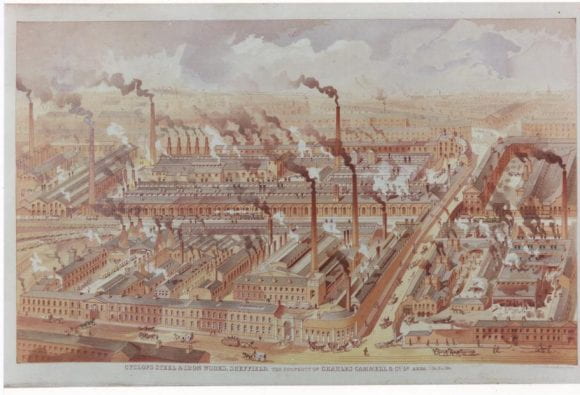
The Cyclopse steelworks, shown here in 1861, is a good example of the large scale metal industrial factory sites that made Sheffield into the most important iron and steel making city in Britain.

Kelham Island industrial Museum
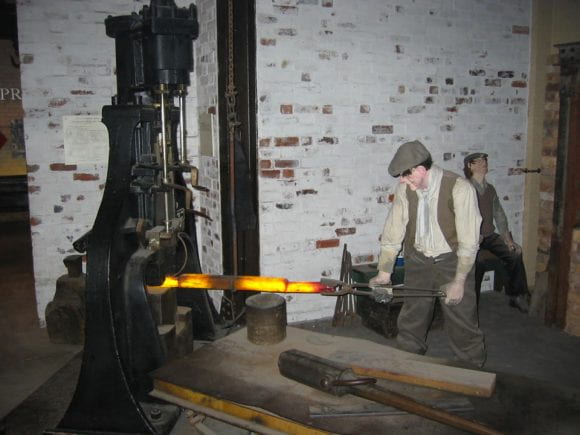
A steam driven steel hammer exhibit

Large steam hammer

Kelham Island industrial exhibit

Bessemer converter. Since the 1740s steel had been made using a crucible process, which used clay pots to make steel in small amounts. In 1856 Henry Bessemer invented a process that made possible the mass production of steel. The egg-shaped converter was tilted down to pour molten pig iron in through the top, then swung back to a vertical position and a blast of air was blown through the base of the converter in a dramatic fiery ‘blow.’Spectacular but dangerous flames and fountains shot out of the top of the converter. The converter was tilted again and the newly made steel was teemed or poured out. The first converters could make seven tonnes of steel in half an hour.

Bessemer converter.
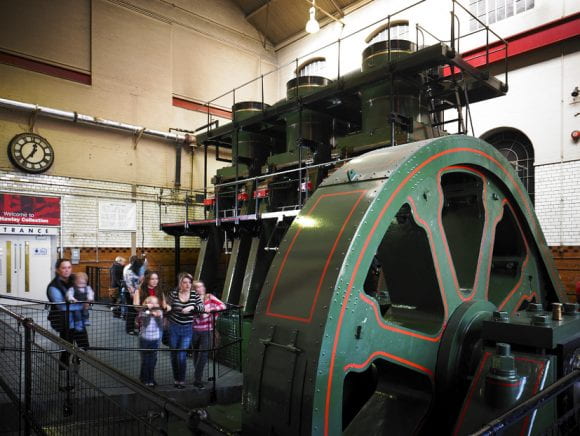
River Don steel rolling engine, 1905. The engine was used to roll armoured steel for the large new battleship, known as dreadnoughts. It was one of the largest steam engines ever made and could produce 12,000 horsepower and weighed 400 tons. Running at full-speed, it can reverse in two seconds. The Museum runs the engine on a regular schedule for demonstrations.
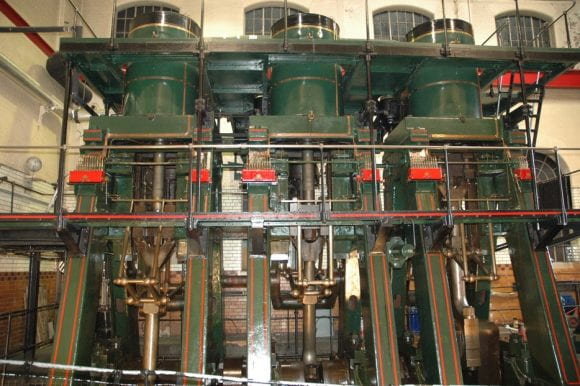
River Don engine
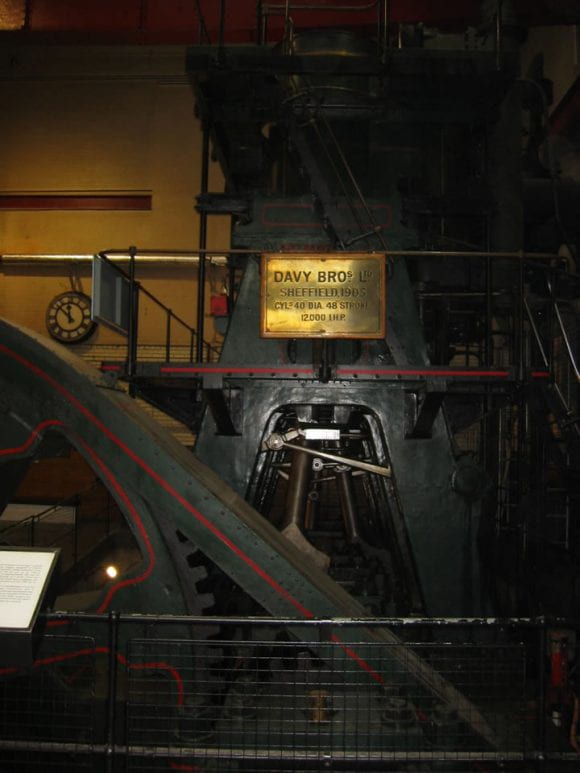
River Don engine

One of the three cylinders of the River Don engine.